Your Guide to The Best Time To Visit Death Valley
A Death Valley National Park visit is an awe-inspiring experience that won’t soon be forgotten. From the vast, challenging terrain and beautiful views to the stillness of the air and the immense size, Death Valley offers a unique opportunity to explore a truly remarkable place. We’ve visited this park several times and are here to help you learn about the best time to visit Death Valley.
With its stark dryness and extreme temperatures, Death Valley is North America’s hottest and driest place. But don’t let this dissuade you; with its stunning views, incredible geology, and unique history, Death Valley National Park is truly a destination worth exploring.
Whether you’re looking for adventure or relaxation, Death Valley offers something for everyone. You’ll find experiences that change with the seasons. Read on to learn about when to go to Death Valley National Park.
The Places Where We Go contains affiliate links and is a member of the Amazon Services LLC Associates Program. As an Amazon Associate, we earn from qualifying purchases at no extra cost to you when you purchase using one of these Amazon links. Read our disclaimer and privacy policy for more information.
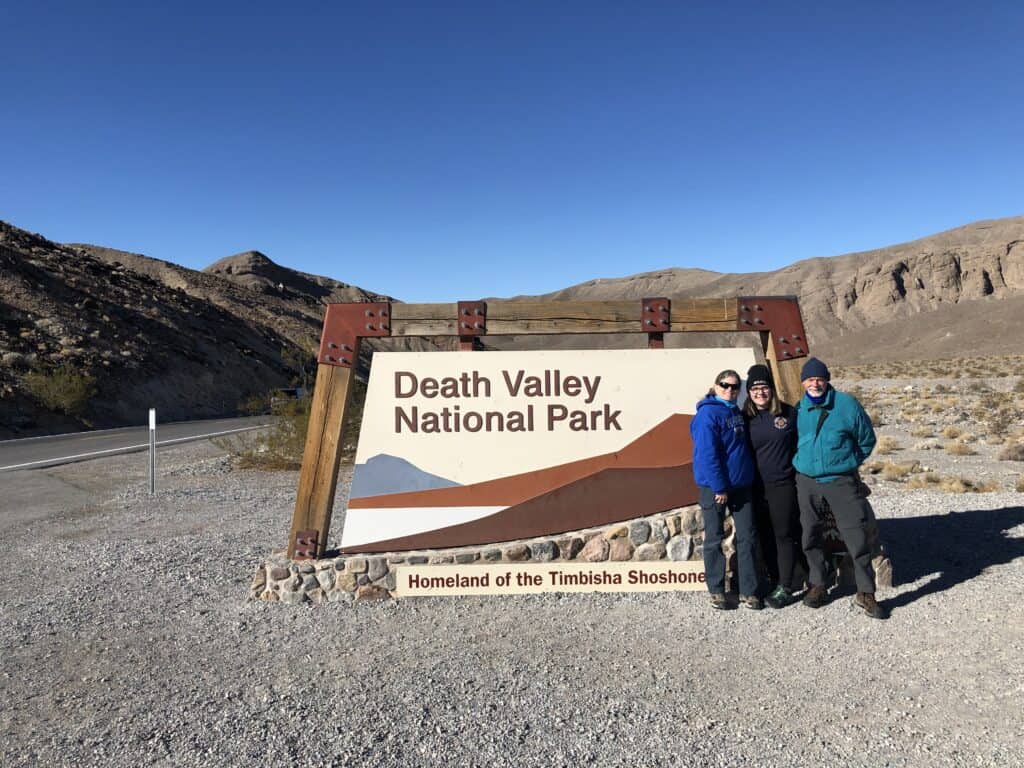
The Overall Best Time to Visit Death Valley
The best time to visit Death Valley National Park is during cooler months, such as winter. During this time, temperatures are cooler and more comfortable, making it easier to explore the park. The winter months also bring some of the best opportunities for wildlife viewing. Many species migrate through or hibernate in the area at this time.
The cooler temperatures also allow exploring more challenging terrain, like canyons and sand dunes such as Mesquite Flat Sand Dunes. The skies are also generally clearer during this time of year, making great stargazing opportunities.
Spring and fall are also excellent times to visit Death Valley National Park. These seasons offer mild temperatures and often present beautiful desert wildflowers.
No matter when you decide to visit, there is always something new to explore in this remarkable place. From its dramatic landscapes to its incredible geology, Death Valley National Park offers an unforgettable experience for everyone.
Get Free Weekly Travel News Updates

Temperatures By Month in Death Valley
Death Valley National Park’s temperatures can vary greatly and change quickly. During the winter months of December through February, temperatures tend to be milder, with an average temperature of around 68°F (20°C). However, temperatures in this area can reach as low as 30°F (-1°C) or drop below freezing at night.
Spring is generally warmer, reaching over 90°F (32°C). During the summer months of June through August, temperatures can reach a scorching 115°F (46°C) or even higher, making it the hottest and driest place in North America.
The Fall is usually milder than Summer temperatures, ranging from 80-100°F (27-38°C).
No matter when you decide to visit Death Valley National Park, it’s a good idea to bring plenty of water and protective clothing for any season. With temperatures that can change quickly, it’s essential to be prepared for any weather.
Death Valley By Seasons Of The Year
Death Valley National Park is a truly remarkable place. The seasons of the year offer unique experiences for visitors. No matter when you decide to visit, Death Valley offers something for everyone. Here’s a snapshot of the Death Valley experience by the season of the year:
Winter in Death Valley
These months are typically mild, with occasional rain and even snow in surrounding areas. This makes winter an ideal time to explore Death Valley’s more challenging terrain, like canyons and sand dunes.
Winter temperatures range from 50-70°F (10-21°C) during the day and can drop to around 30°F (-1°C) at night, so it’s essential to bring warm clothing and plenty of water. Winter is also an ideal time for visitors to take in the fantastic night sky, as there are often clear skies and little light pollution, making it perfect for stargazing. Winter is our favorite time of year to visit Death Valley National Park.
Spring in Death Valley
This is the most popular time of year to visit Death Valley. After mid-March, warmer temperatures come to Death Valley, and wildflowers and wildlife viewing opportunities. Temperatures range from 70-90°F (21-32°C) during the day and can drop to around 30°F (-1°C) at night, so it’s essential to bring warm clothing and plenty of water.
Spring break is also a popular time for visitors so crowds can be an issue. Despite the crowds, Spring in Death Valley is an unforgettable experience.
Summer in Death Valley
Mid-June through mid-September can be scorching hot and extremely dry. This is the authentic desert experience, and it can be pretty unforgiving. Temperatures range from 100-115°F (37-46°C) during the day and rarely drop below 80°F (27°C) at night, making it one of the hottest places on earth.
Summer here is known for its dry conditions and sand storms, and visitors should be prepared for any weather. It’s a great time to see the Milky Way in full glory, and the lack of crowds provides the perfect backdrop for stargazing. Summer may be hot, but Death Valley’s beauty shines bright during this season.
We’ve heard that the summer months often attract visitors from outside the United States. We recommend avoiding summer in Death Valley, as it is just too difficult to experience the park safely when temperatures get too extreme.
Fall in Death Valley
As we move into and beyond October, milder temperatures and stunning sunsets make an ideal time to take in the sights of Death Valley National Park. Temperatures are much more favorable than in Summer, ranging from 80-100°F (27-38°C) during the day and rarely dropping below 50°F (10°C) at night. Autumn is also less crowded than other seasons, making it ideal for exploring some of the desert landscape’s more remote and challenging parts.
Fall in Death Valley is an ideal time for outdoor activities. Hiking, biking, and horseback riding are popular activities, as the milder temperatures provide an excellent opportunity to explore the desert landscape. This time of year is also a great time to experience the unique culture of Death Valley, as locals come out to celebrate with festivals, concerts, and other events.
If you want to photograph Death Valley, fall is an ideal time to visit as the warm light and big clouds cast beautiful shadows across the valley floor. For many visitors, autumn is the best time of year to visit Death Valley. It provides an unforgettable experience that will take your breath away.
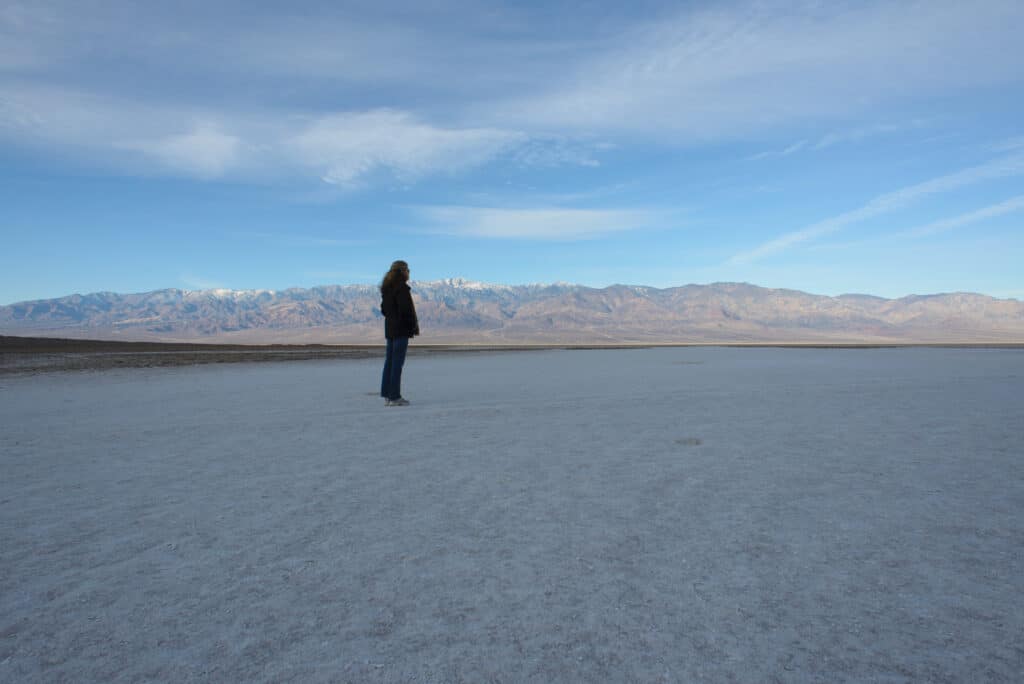
What Month Is Best To Visit Death Valley?
If we’re going to pick the single best month to visit Death Valley National Park, we choose November. Temperatures during this time range from 50-70°F (10-21°C) during the day and can drop to around 30°F (-1°C) at night. The autumn sun creates beautiful hues as you gaze at the landscape during this time of year. This makes it an excellent time for photography.
As temperatures cool from summer highs, it becomes easier to take in more hours to explore the area on hikes. Dante’s View is one hike we recommend, as you’ll see a fantastic view of the valley below as you look down at Badwater Basin from a great vantage point.
With its mild temperatures and lack of crowds, Death Valley in November is an unforgettable experience.
What Time Of Day Is Best When Visiting Death Valley?
The best time to explore Death Valley during much of the year is during the early morning and late afternoon hours. We have found that getting to popular attractions early in the morning can provide a more personal experience. Most tourists enjoy a little morning sleep when on vacation, even in national parks. We’ve been to Badwater Basin at the crack of dawn during winter months and have had the large salt flats all to ourselves.
When Is The Best Time To Visit Death Valley For Stargazing?
The best time to visit Death Valley for stargazing is during the winter months when clear skies lack light pollution, and more hours during the night of darkness make it perfect for stargazing. It can get freezing in the evenings during winter in Death Valley, so bringing warm clothing and dressing in layers is essential. Winter is a perfect time to visit if you enjoy nighttime outdoor activities like stargazing.
Dark Sky Festival in Death Valley National Park
The Death Valley National Park Dark Sky Festival is an annual event that celebrates Death Valley’s night skies and encourages people to appreciate the beauty of the stars. The festival occurs in November, during the winter months when dark skies are abundant.
During this time, visitors can take guided stargazing tours led by expert astronomers, explore interactive exhibits, and watch live presentations. Death Valley National Park is known for its lack of light pollution, making it the perfect place to take in the night sky.
Aspiring photographers can also take advantage of the warm light and big clouds that cast beautiful shadows across the valley floor. The Death Valley Dark Sky Festival is an unforgettable experience you’ll want to schedule to experience!
Where Are The Best Places To View Stars In Death Valley?
The best places to view stars in Death Valley National Park are on its highest peaks and ridges. Telescope Peak, the park’s highest point at 11,049 feet (3,368 m), is an ideal spot for stargazing. You can enjoy views of Mount Whitney, the Sierra Nevada range, and beyond from here.
When Can I Visit Death Valley To View A Superbloom?
Death Valley’s iconic super blooms usually arrive in March through May, depending on the rain. The best way to maximize your chances of seeing a superbloom is to plan your trip during the late winter and early spring months. During this time, Death Valley may be filled with vibrant colors from thousands of wildflowers that have sprung up in the desert.
Note that a super bloom does not happen yearly, so you’ll want to check local conditions if this is why you want to visit Death Valley National Park.
What Is A Superbloom?
A superbloom is an event that happens when unusually large amounts of wildflowers bloom in the desert. Superblooms usually occur after heavy rains, often lasting for a few weeks.
Superblooms are most common in deserts like Death Valley National Park but can also occur elsewhere. The sight of thousands of flowers blooming in desert landscapes creates a stunningly beautiful and unique image that can only be experienced in person. Superblooms are a rare but breathtaking phenomenon you’ll remember if you’re lucky enough to experience such an event.
How Is A Superbloom Predicted?
A super bloom is predicted based on an area’s rainfall in a given year. If the desert gets more rain than usual, there is a higher chance that a superbloom will occur. Additionally, meteorologists and climate scientists use computer models to predict when the ideal conditions for a super bloom may occur. These models help them forecast when a superbloom will happen and the best places to view it. By staying informed on current weather patterns and forecasts, you can ensure that your trip to Death Valley is timed perfectly with a beautiful superbloom.
Is Superbloom An Annual Event?
No, super blooms are not an annual event. Superblooms occur when there is unusually high rainfall in a given year. As this can vary significantly from year to year, it’s impossible to predict precisely when a super bloom will happen. However, these rare events bring incredible sights and are excellent to experience when nature puts on this show.
What Types Of Flowers Can I See In Death Valley?
Death Valley National Park is home to an incredible variety of flowers and plants, many of which are endemic species found only in the park. Depending on the time of year, visitors can view wildflowers like Desert Gold, Desert Mariposa Lily, and Evening Primrose, as well as cacti like Hedgehog Cactus and Beavertail Prickly Pear.
Visitors may be lucky enough to witness the park’s iconic super blooms, where thousands of flowers bloom in vibrant colors and blanket the desert floor. Whatever time of year you visit Death Valley National Park, there will be plenty of flowers and other plants to see!
Annual Events In Death Valley
Death Valley National Park offers various activities and events for visitors throughout the year. Death Valley often springs to life in late spring and early summer with its famous wildflower blooms. Visitors can join guided wildflower tours or go on their own hikes to experience this incredible event. In addition to the wildflowers, Death Valley National Park hosts various other events.
Astronomy programs are held annually at Furnace Creek Visitor Center, offering visitors an up close and personal look at the night sky. Death Valley’s 48 Hours in the Desert Festival is one of the most popular annual events, which includes music, art, and film screenings set against the stunning Death Valley landscape.
Finally, Death Valley’s off-road races, such as the Death Valley 300 and Badwater Ultra Marathon, are a great way to experience the rugged desert terrain.
No matter when you visit Death Valley National Park, there will be plenty of events for visitors to enjoy! Whether you’re interested in astronomy or off-roading, Death Valley has something for everyone.
Frequently Asked Questions – FAQ
How Many Days Are Recommended to Visit Death Valley National Park?
The number of days visitors should stay in Death Valley National Park depends on their interests and goals for the trip. Three to four days are recommended for leisurely exploring the park.
Without feeling rushed, this will provide enough time to visit the main attractions, such as Zabriskie Point and Badwater Basin. Those more adventurous and looking to explore the park more in-depth may want to stay for five days or longer.
Is Death Valley Too Hot in April and May?
Death Valley National Park is famously known for its scorching temperatures, so it’s no surprise that even April and May can be pretty hot. Suppose you want to visit during these months. We recommend paying close attention to the 10-day weather forecast before your visit so you can adequately prepare your Death Valley itinerary around the temperatures you’ll experience.
Does It Snow in Death Valley?
Although snow isn’t common in Death Valley, it can snow during winter. While snow is rare, visitors may be lucky enough to witness a light dusting of snow on the surrounding mountains. Snowfall often happens between December and February, though temperatures rarely drop below freezing.
On a recent trip, we ventured to the nearby Rhyolite Ghost Town, a beautiful winter wonderland in January.
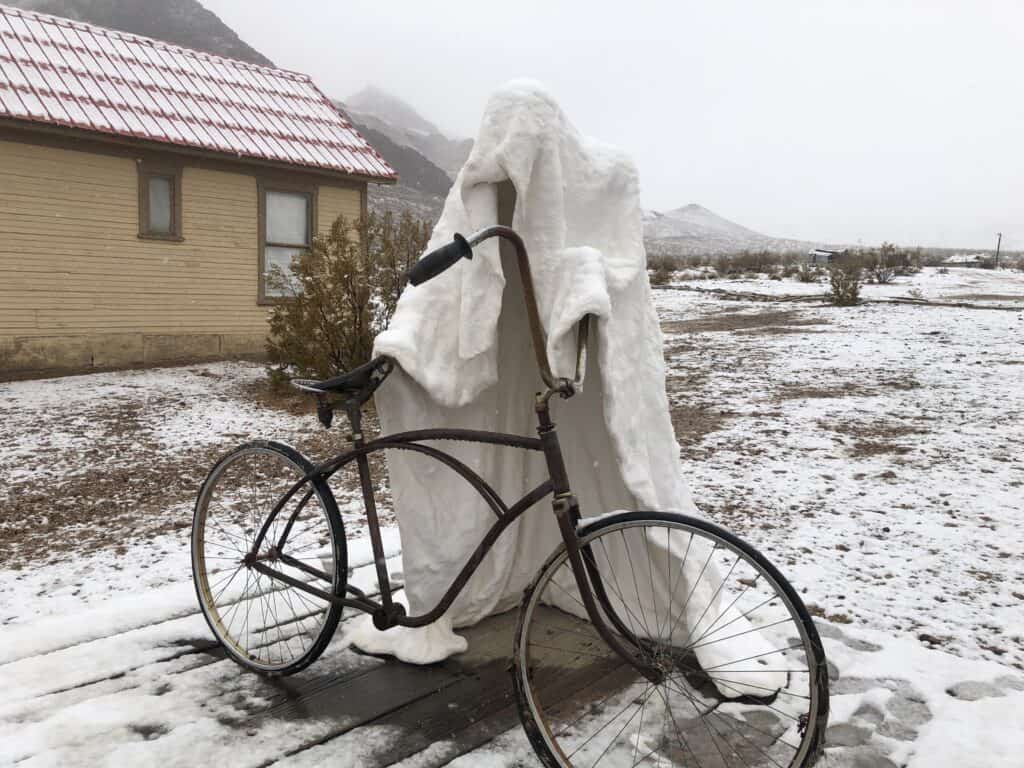
What Is The Hottest Month In Death Valley?
The hottest month in Death Valley is typically July when temperatures often reach highs of over 117°F (47°C). While the hottest months are during summer, visitors should keep in mind that temperatures at this time can still reach dangerous levels, and precautions must be taken. Carrying plenty of water and wearing sun-protective clothing is recommended to prevent heat-related illnesses.
What Is The Hottest Temperature Ever Recorded In Death Valley?
The hottest temperature ever recorded in Death Valley was 134°F (56.7°C) on July 10th, 1913 – a record that still stands today! Death Valley is known for its scorching temperatures, so it’s no surprise that this record has stood for over 100 years. Visitors should be cautious during summer as extreme heat can become dangerous. Visitors must wear sun-protective clothing and carry plenty of water when exploring Death Valley National Park.
Why Should You Visit Death Valley?
Death Valley National Park is a destination like no other. At over 3.4 million acres, it’s the largest national park in the United States outside of Alaska. With breathtaking views of the desert landscape, unique geological formations, and interactive events and activities, visitors will not be disappointed by what they find during their visit!
There are plenty of activities to choose from, including hiking, biking, stargazing, and bird-watching. History buffs can explore the early mining history of the area at the remnants of Harmony Borax Works or the museum at Furnace Creek.
When Is The Worst time to Visit Death Valley?
The worst time to visit Death Valley is during the peak summer months of July and August. Temperatures during this time can reach dangerous highs, often exceeding 120°F (49°C). Also, sparse rainfall makes for dry conditions and increases the risk of flash floods.
If you decide to visit in the summer, you should take all the necessary precautions. Wear sun-protective clothing and carry plenty of water when exploring the park. And be sure to keep an eye on the weather – flash floods can occur even in dry conditions due to the desert soil not absorbing rainfall quickly enough.
Visiting in the late fall or early spring is recommended for those who want to explore Death Valley without risking extreme temperatures. Temperatures during this time are more moderate, typically between 70-80°F (21-27°C), and rainfall is relatively low. This is an ideal time to explore and enjoy the park’s unique beauty!
Where Can I Stay In Death Valley?
Check out our guide on the best places to stay during a visit to Death Valley. We’ve curated a list of locations within and outside the park. It’s a viable destination, especially for people from Los Angeles to the west or Las Vegas to the east.
Our list includes budget options through luxury options and various accommodations from hotels to B&Bs, RV parks, and tent sites. You have great options within Death Valley, from Panamint Springs Resort to Stovepipe Wells. Campers have plenty of campsites to select from at Furnace Creek Campground.
Check out our full list:
Where To Stay In Death Valley – Your Guide to 18+ Top Places
What Are The Best Things To Do In Death Valley?
Many of the best things to do in Death Valley are easily accessible from the Furnace Creek area. We’ve assembled these into a recommended one-day itinerary.
Our top attractions include Mesquite Flat Sand Dunes, Harmony Borax Works, Borax Museum, Furnace Creek Visitor Center, Badwater Basin, Artist’s Palette, and the scenic drive of Artist’s Drive, Devil’s Golf Course, Golden Canyon Trail, and Zabriskie Point.
Lastly, our recommended one-day itinerary considers the time to get from one destination to another and provides a recommended time to visit each attraction.
One-day itinerary for Death Valley
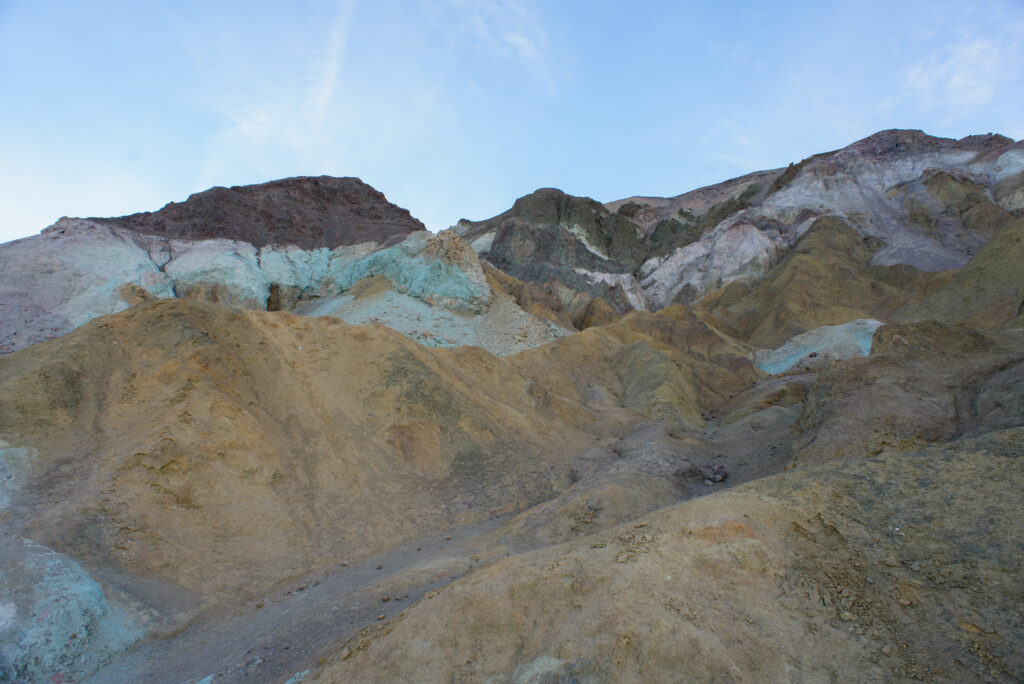
Best Times To Visit Death Valley – Final Thoughts
Death Valley National Park is an incredible destination for exploring the desert landscape and enjoying unique activities. Visitors flock here from all over the United States and the world. Its unusual elevation situates it at the lowest point in North America. Whether you visit in the peak summer months or late fall, Death Valley offers something for everyone!
Visitors should be cautious during the summer, as temperatures can reach dangerous highs – often exceeding 120°F (49°C). If you decide to visit Death Valley in the summer, wear sun-protective clothing and carry plenty of water.
Visiting in the late fall or early spring is recommended for those who want to explore Death Valley without risking extreme temperatures. Temperatures during this time are more moderate, typically between 70-80°F (21-27°C), and rainfall is relatively low. This is an ideal time to explore and enjoy the park’s unique beauty!
If you want to walk on land at the lowest point below sea level in North America, this is the place to visit. No matter why or when you visit Death Valley, it will leave a lasting impression.
Get Our Free Death Valley Packing Checklist
|
Primary Rating:
4.8
|
Primary Rating:
4.8
|
Primary Rating:
4.7
|
|
$11.80
|
$23.91
|
$20.41
|
Death Valley National Park – Know Before You Go
✈️ Closest Airport: Las Vegas McCarren (LAS)
⏰ Time Zone: Pacific Standard Time (GMT-8)
Gas Stations: Refer to our Death Valley Gas Stations Guide
Conclusion – The Best Time To Go To Death Valley
In closing, whether you’re seeking the mesmerizing wildflower blooms of spring, the breathtaking stargazing opportunities of dark winter skies, or the striking desert landscapes at any time of year, Death Valley offers unforgettable experiences for every kind of adventurer.
While each season has its unique allure, careful planning will ensure you experience the park at its best. No matter when you visit, remember to prepare for the desert’s extreme conditions and make the most of your time in this stunning, otherworldly destination.
Thanks for reading this article to pick the best time to go to Death Valley that works for you. Happy travels, and enjoy your journey to Death Valley! We hope to see you at the places where we go.
More Posts About Death Valley
6 Awesome Death Valley Sand Dunes – Your Complete Guide
Do People Live in Death Valley
Listen To Our Death Valley Podcasts
Fuel your wanderlust with weekly travel updates – It’s 100% FREE!
Pin It For Later!
#deathvalley #deathvalleynationalpark
death valley best time to visit

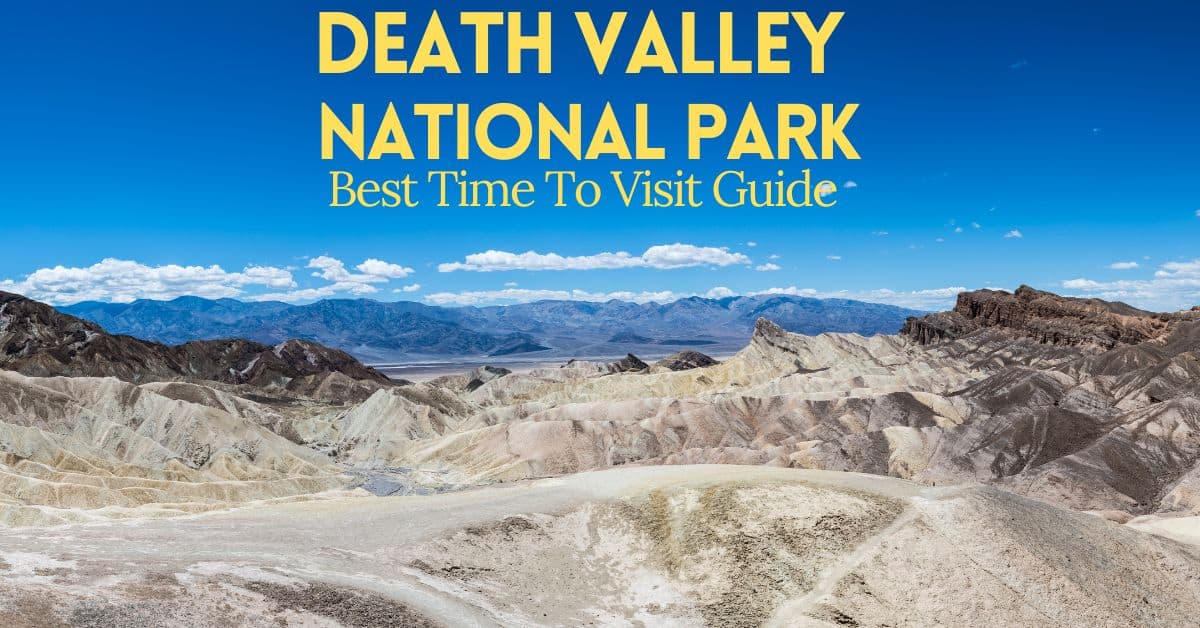
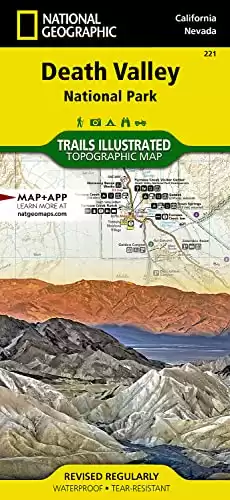
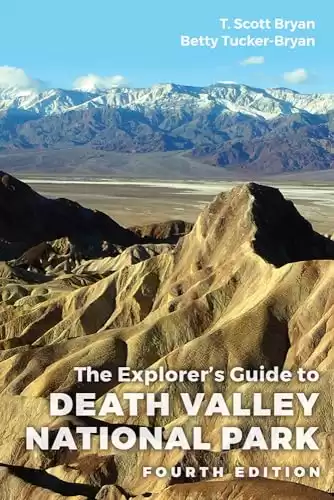
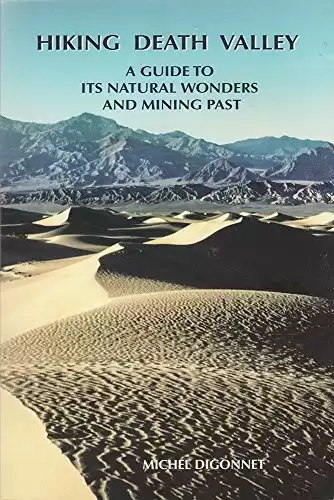
4 Comments
Comments are closed.